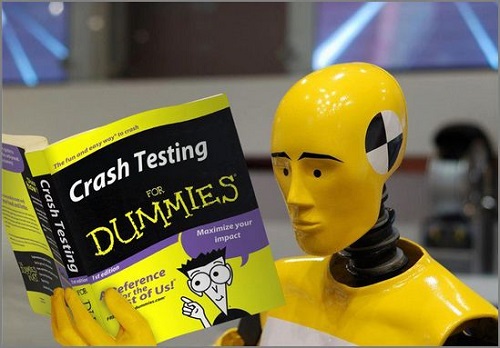Ethics in Crash Testing; Cadavers and Dummies
Ethics in Crash Testing; Cadavers and Dummies
Crash testing is not often considered as an ethical hot topic. For the majority of the world, it is the part of the automotive creation process that we often forget about. You can put these big engines and flashy designs on a car, but if it doesn't meet safety standards, it's sent back to the drawing board. The amount of work put into safety-testing a car is often overlooked and undervalued.
Prior to 1970, there wasn't a government division whose sole goal was automotive safety. It wasn't until the 70's when automotive deaths reached an all time high that our government finally decided to take action. According to the National Highway Traffic Safety Administration website, it took 8 years from the formation of the administration for the first tests on frontal impacts to begin. As a driver, wouldn't it be worrisome to know automotive deaths are at an all time high, but the government is taking almost a decade to begin preventative testing? As I wasn't living during the time, it's hard to determine how transparent the NHTSA was with the public. It is clear, however, that their duty to the general people was to take action to combat the record amount of deaths occurring at the time.
As an engineer, my ethical responsibility would be to consistently improve upon the safety standards we have come to expect. Until it is impossible to die in a car crash, there will always be a responsibility to improve. For example, engineers today are working on crash avoidance technologies; which are devices in your car that will actively control the vehicle in the case of a potential accident.
The most interesting debate on ethics and crash testing has to be on the use of cadavers. For those who don't know, a cadaver is a euphemistic word for a dead body. Cadavers are the bodies of people who have passed away for various reasons, and who chose to have their bodies donated to science. The first ethical question arises here - is crash testing a valid use of a dead body or is it intended that these bodies be tested by medical professionals only? In a way, isn't a crash test engineer working in the medical field? Their job is to observe various crash scenarios and design devices and tools to safeguard the passengers in those scenarios.
In addition, the benefit of using cadavers is immense; scientists can study and observe the effects on a real human body without the inhibitions of crash test dummies. Even though they're becoming more and more technologically advanced, dummies simply cannot provide enough data to outmatch the cadaver. One of the major flaws I believe they have is the fact that they are designed to survive multiple deadly crash tests. In reality, in a deadly crash, the body does not survive, and scientists need to see why. If you have a dummy who can only reflect a portion of the damage that occurred, it's hard to report your data as complete.
In their article, "How Cadavers Made Your Car Safer", wired.com touches on why the use of cadavers in our country is still a taboo topic. They note how universities have taken steps to communicate with the families of donors, letting them know how the body will be used and how it will be disposed after it has served its purpose. That's a good step, but it's a solution on the micro, rather than the macro level. The main problem, as outlined by wired.com, is that people don't want to see a crash test with a real human body. Even if the bodily extremities, including the head, hands, and feet are covered, it is still hard to watch a body be potentially dismembered. The general public would much rather watch a crash test dummy be destroyed, and for that point even I'd have to agree.


Crash testing isn't something I think of often, and when I do it's only with dummies. Until recently I had no idea that cadavers were also used for these tests. I agree that crash testing cars is really important. Cars are so ingrained into our daily lives and cause so many deaths every year. I believe that cadavers should be used for these tests, but only if the donors specifically agreed to it. As long as the donor knows what they are getting themselves into it should be fine.
ReplyDeleteI don't see any problems with your writing, but the placement of your images can be improved. I feel like your first image should be a little bit lower because it doesn't seem to fit with the text around it. Your second image is messing with the text a bit, you might want to fix it so that the text isn't squished in the small space to the right of the image. Other than those issues your post looks great.
This article contained some interesting research and thought-provoking points. I liked how you said that until the death rate is zero, that automotive designers would have a responsibility to improve safety. This article fell a bit short when it came to an actual discussion of using cadavers as crash testers. What are the ethical implications of this? Where do the bodies come from? Are there ethical problems with destroying dead bodies? If not, why not?
ReplyDelete